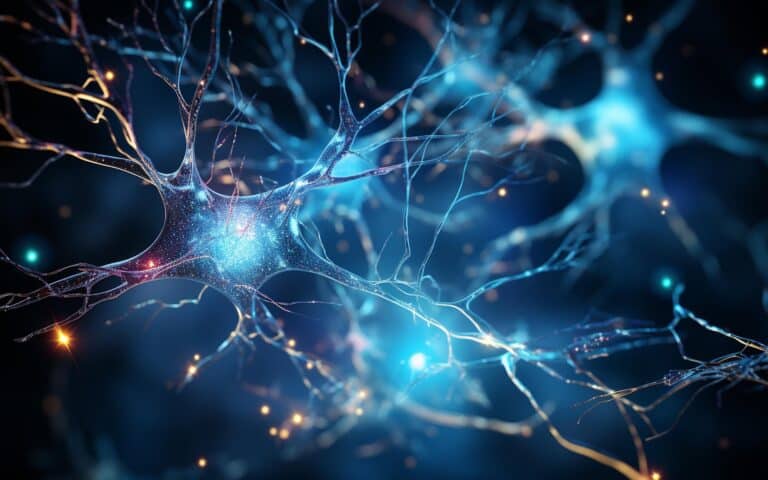Neuroanatomy and ADHD
The Prefrontal Cortex
Located at the front of the brain, the prefrontal cortex governs executive functions such as decision-making, attention, memory, and problem-solving abilities. In children with ADHD, there is often reduced activity here, which can explain why they have difficulty with tasks that require staying focused and controlling impulses. Understanding this connection can help you comprehend why children with ADHD face those kinds of challenges, which enables us to find effective ways to overcome them.
The Basal Ganglia
The basal ganglia are a group of brain structures that play a vital role in coordinating movement, learning, and how we experience rewards. Irregularities in the area can cause an inconsistent level of dopamine, which can contribute to some of the impulsive and unpredictable behaviors seen in individuals with ADHD.
The Limbic System
The limbic system includes important structures like the amygdala and the hippocampus, which help regulate emotions and memory. Abnormalities in this area may contribute to difficulties with emotional regulation. As this is often seen in individuals with ADHD, they might struggle to control their emotions, leading to mood swings, outbursts, and increased anxiety. Navigating these obstacles can help you support your child’s emotional well-being.
How to Improve Your Child's Functional Neuroanatomy
Healthy Lifestyle Choices
Making healthy lifestyle choices can have a positive impact on the neuroanatomy of ADHD in children. Balanced nutrition, sufficient sleep, and regular physical activity can help improve the transfer of dopamine, a neurotransmitter involved in ADHD. These efforts support the brain’s functioning and can contribute to better attention and impulse control.
Reducing Stress
Reducing stress is crucial for managing ADHD symptoms. Creating a calm and safe environment for your child can minimize behavioral issues. Techniques like yoga, meditation, and deep-breathing exercises can help reduce stress levels and positively influence neuroanatomy, promoting a more balanced brain activity.
Establishing Structured Routines and Schedules
Establishing structures and schedules is particularly effective for children with ADHD. Consistent morning, after-school, and bedtime routines can reduce inattention and hyperactivity by providing predictability and structure. These help organize the brain’s neural pathways, optimize neuroanatomy, and facilitate smoother cognitive processes.
Using Visual Aids and Reminders
Using visual aids and reminders can be a powerful tool for children with ADHD who struggle with remembering instructions. Post-it notes, bulletin boards, or illustrated schedules displaying daily plans and specific tasks can reinforce discipline and foster a sense of responsibility. These visual cues stimulate the brain’s visual processing and memory centers, enhancing neuroanatomy and improving cognitive functions.
Channeling Excess Energy
Channeling excess energy is vital for managing hyperactivity in children with ADHD. Encouraging sports or arts allows them to utilize and redirect it in constructive ways. These activities support physical well-being and enhance neuroanatomy by promoting coordination, focus, and self-regulation.
Stimulating Cognitive Functions
Stimulating cognitive functions is a valuable approach to treating ADHD, and one promising technique worth considering is neurofeedback. It utilizes advanced technology to provide real-time feedback on brain activity, helping individuals with ADHD gain insights into their brain’s functioning. By engaging in neurofeedback training alongside other activities that challenge the brain’s areas involved in focus, organization, and planning, children with ADHD can potentially experience positive changes in neuroanatomy. It can foster a sense of control and achievement, reinforcing neural connections and improving cognitive skills.
Encouraging Reading and Active Learning
Encouraging reading and active learning is beneficial for children with ADHD. Reading promotes focus, comprehension, and overall cognitive function. Actively involving children in their learning process through hands-on activities and interactive approaches further enhances neuroanatomy and helps manage the disorder more effectively. By nurturing a love for engaging in studies, you can support your child’s neurodevelopment and cognitive abilities.
Understand Your Child's Brain With Abbey Neuropsychology Clinic
At Abbey Neuropsychology Clinic, we understand the unique challenges you and your child face while navigating ADHD. Our compassionate team understands the neuroanatomy of the ADHD brain and provides personalized, medication-free solutions to help your child thrive. With our evidence-based strategies and practical tools, we help your child strengthen their cognitive functions, enhance focus, improve impulse control, and foster better emotional regulation.
Schedule a call with us today to start unlocking your child’s abilities.






